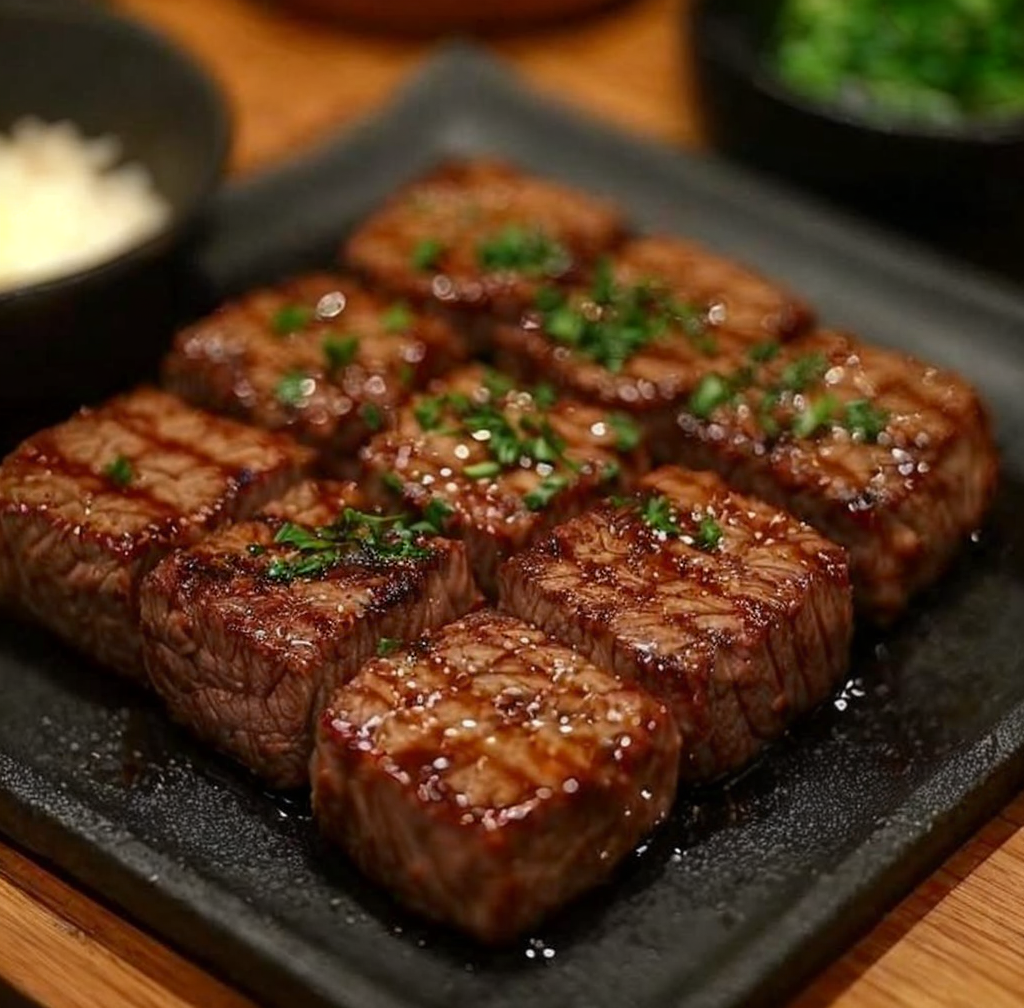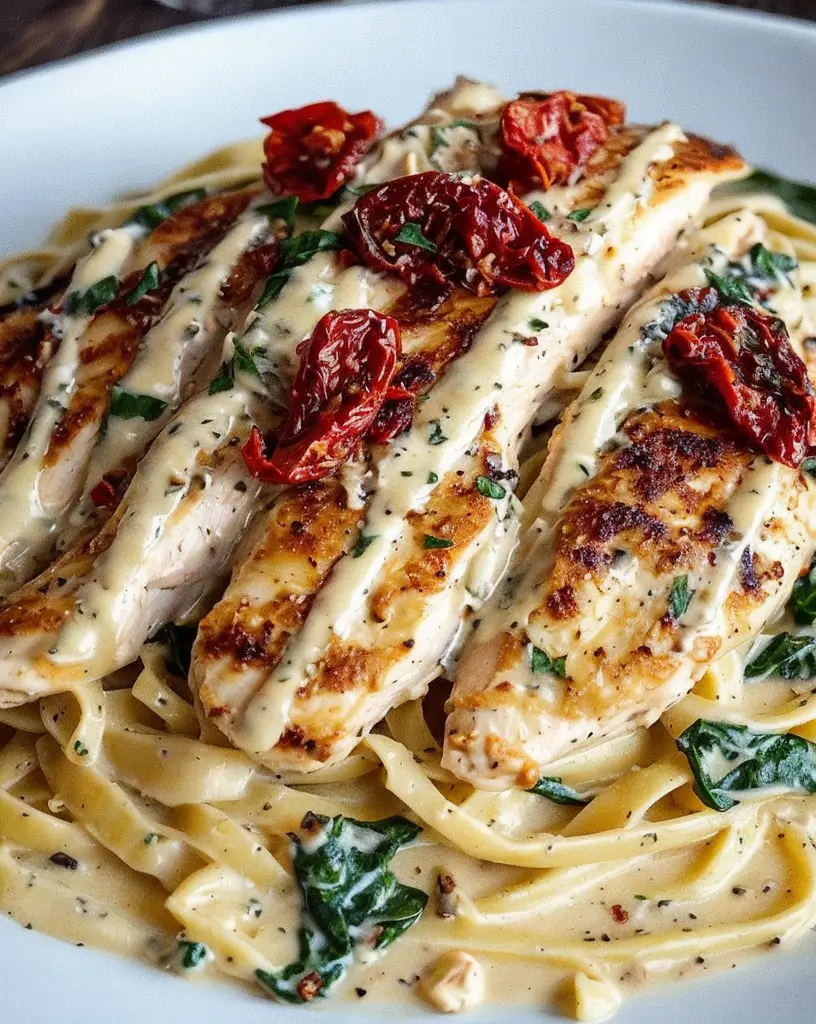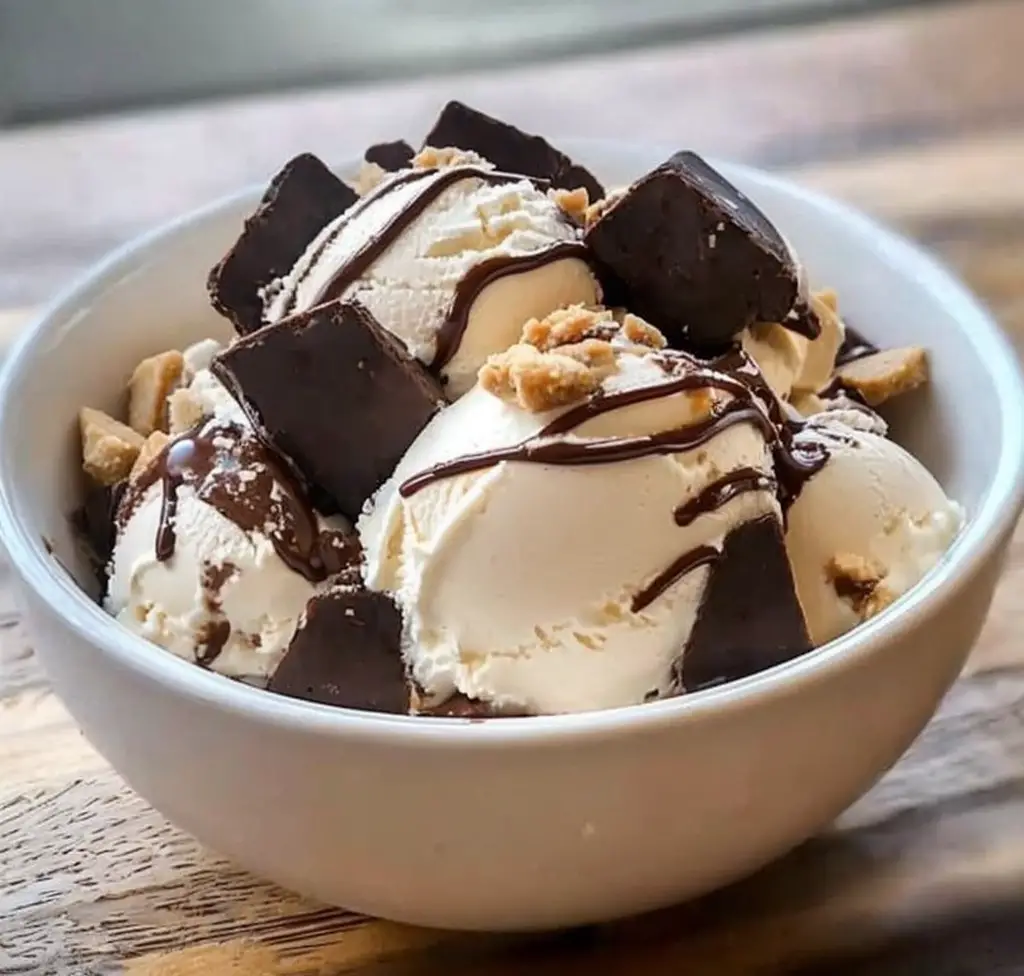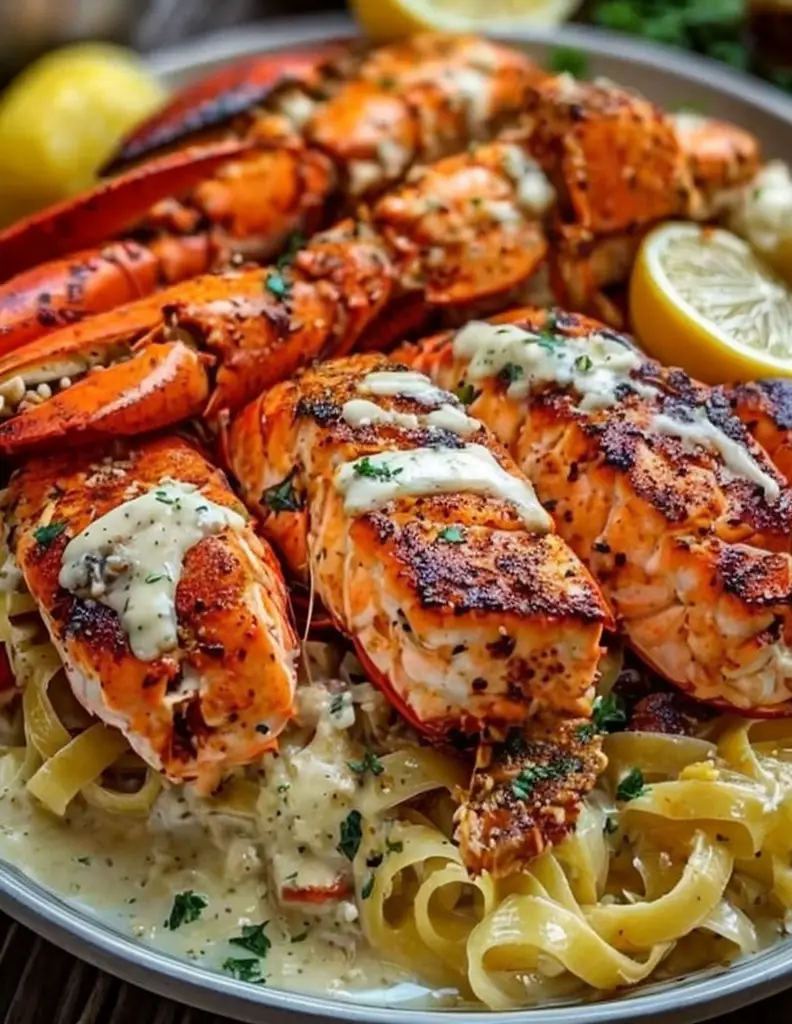A5 Wagyu Steak: The Ultimate Indulgence in Luxury Dining
Experience the epitome of luxury with A5 Wagyu Steak, a dish that tantalizes the taste buds and ignites the senses. The marbling in A5 Wagyu boasts high-fat content that brings out a buttery richness in flavor, elevating this steak to a realm only found in the finest steakhouses. With its origins rooted deeply in Japan, this steak is not just a meal; it’s an experience, embodying the art of meticulous farming practices that yield unmatched quality and taste.
As you prepare your A5 Wagyu Steak, you’ll appreciate the irresistible aroma wafting through your kitchen, promising a savory delight. The moment you slice through the rare, perfectly cooked pink interior, you’ll encounter a melt-in-your-mouth texture that transforms your dining table into a gourmet journey. This dish is best served simply, allowing the rich flavors to shine without distraction.
Quick Recipe Highlights
- Flavor Profile: A5 Wagyu Steak offers an indulgent flavor experience, with a delicate sweetness balanced by a rich umami that lingers pleasantly on the palate.
- Texture: The outstanding marbling of A5 Wagyu creates a buttery, smooth sensation that melts in your mouth, making every bite a luxurious delight.
- Aroma: Expect an enticing aroma of grilled savory beef with hints of nuttiness, a result of the unique rearing methods employed to breed Wagyu cattle.
- Visual Appeal: The vibrant marbled patterns across the steak create an enticing sight, elevating the dish’s presentation on your plate.
- Skill Level Needed: While cooking a perfect A5 Wagyu Steak requires attention and technique, even novice cooks can achieve impressive results with patience and practice.
- Special Equipment: A high-quality cast-iron skillet or grill is essential for attaining the optimal sear and flavor extraction of the Wagyu fat.
Recipe Overview
- Difficulty Level: Cooking A5 Wagyu Steak is moderate in difficulty due to the need for precise temperature control and timing, yet it can be learned with a little practice.
- Category: This recipe fits under the category of gourmet meats, ideal for special occasions and fine dining experiences.
- Cuisine: The influence of Japanese culinary traditions is evident in the finesse of preparing A5 Wagyu, reflecting a culture that values quality ingredients and aesthetics.
- Cost: A5 Wagyu can be on the pricier side due to its gourmet status, typically costing between $100 to $300 per pound, reflecting its premium quality.
- Season: Enjoy A5 Wagyu year-round, but it’s particularly fitting for celebrations and special gatherings that call for an extra touch of indulgence.
- Occasion: Ideal for anniversaries, romantic dinners, or any holiday, serving A5 Wagyu is a gesture that conveys thoughtfulness and appreciation.
Why You’ll Love This Recipe
The taste and texture appeal of A5 Wagyu Steak is unrivaled. Each succulent bite offers an exceptional presentation of flavor, giving you a taste experience that is luxurious and satisfying. The umami richness paired with the tender, melt-in-your-mouth texture makes this steak a true delicacy.
Convenience and preparation benefits make A5 Wagyu an attractive option for those who desire a high-end meal without extensive culinary expertise. With only a few steps—sourcing quality meat and cooking it to perfection—you can achieve restaurant-level results in your own kitchen.
Nutritionally, this choice offers a premium source of protein while being a treat that’s appreciated in moderation. The fat content in A5 Wagyu provides omega-3 fatty acids, which are beneficial for heart health and can aid in overall well-being, balancing indulgence with nutrition.
Socially, serving A5 Wagyu engages your guests, sparks conversation, and offers a shared experience that elevates any occasion. As friends or family savor each bite, the shared delight turns your meal into an event to remember.
Cost-effectiveness may sound counterintuitive given the price tag, but considering this steak’s uniqueness and the quality of experience provided, it becomes an investment in culinary artistry. When entertaining, offering something as exclusive as A5 Wagyu creates lasting impressions without needing to prepare complex dishes.
Historical Background and Cultural Significance
A5 Wagyu Steak traces its roots back to Japan, where it is derived from specific cattle breeds, known for their genetic predisposition to intense marbling. This legacy begins with farmers who raised these cattle under strict conditions that enhanced their characteristics, often massaged and fed special diets to enrich flavor and texture.
Culturally, Wagyu represents the pinnacle of Japan’s culinary pride, synonymous with luxury dining. The reverence for Wagyu is echoed in the meticulous care involved in its production, showcasing a commitment to quality that resonates with Japanese cuisine’s core values—harmony and respect for ingredients.
The evolution of this recipe reflects changes in dining trends and the growing global appreciation for fine foods. As people discover the pleasure of gourmet meats, A5 Wagyu has made its way into mainstream culinary experiences, becoming a sought-after dish in high-end restaurants around the world.
Regional variations of Wagyu also exist, adapting to local flavors and cooking styles, allowing the richness of A5 to shine through various culinary lenses, from traditional Japanese methods to modern gastronomic interpretations.
Ingredient Deep Dive
Wagyu beef is a central ingredient in this recipe, historically significant in its production and cultural context. Rich in healthy fats, Wagyu beef is highly marbled, delivering flavor and tenderness that sets it apart from conventional beef. When selecting Wagyu, look for A5 grade to ensure the highest quality, as indicated by its impressive marbling and texture.
Next is salt, a simple yet crucial ingredient that enhances flavor. Opt for coarse sea salt or kosher salt for even seasoning. Store salt in a cool, dry place to maintain its potency and substitute with specialty salts, if desired, for additional flavor notes.
Finally, fresh herbs such as rosemary or thyme can be used to enhance aroma and elevate the dish. Choose vibrant herbs, and store them in the refrigerator. They can be substituted with dried versions, but fresh herbs offer a more intense flavor.
Common Mistakes to Avoid
- Not resting the steak: Allowing the A5 Wagyu to rest after cooking is essential for keeping it juicy and flavorful. Cutting into it immediately lets the juices escape, leading to a dry result.
- Overcooking: A5 Wagyu is best served rare to medium-rare. Overcooking destroys its revered texture and flavor. Use a meat thermometer to ensure accurate cooking temperatures.
- Skipping seasoning: Don’t overlook the importance of seasoning your steak. A simple sprinkle of salt prior to cooking enhances the natural flavors of the meat.
- Using the wrong cooking method: A high-quality cast-iron skillet or grill is crucial for achieving the right sear without drying out the steak.
- Not letting the steak acclimate: Allow your A5 Wagyu to come to room temperature before cooking. Cold steak won’t sear properly, impacting texture and flavor.
- Neglecting to cut against the grain: Slice the steak against the grain to maximize tenderness. Cutting with the grain can lead to chewier bites.
- Rushing the process: Good things take time. Let the steak rest and the flavors develop during the cooking process for a truly indulgent experience.
- Ignoring personal taste preferences: Everyone’s ideal steak doneness may vary. Be attentive to your and your guests’ preferences when cooking.
Essential Techniques
Searing the steak is crucial as it caramelizes the meat’s surface, enhancing flavor and creating a delicious crust. Master the technique by preheating your skillet or grill thoroughly before adding the steak, ensuring the fat renders beautifully. Watch for visual cues like a rich golden-brown color to know when it’s time to flip.
Resting the steak is essential to preserving moisture and enhancing flavor. After cooking, let the steak rest for at least 5-10 minutes covered loosely with foil. This allows the juices to redistribute, resulting in a more succulent bite.
Pro Tips for Perfect A5 Wagyu Steak
Select only the best quality A5 Wagyu from reputable suppliers; this ensures an authentic and satisfying experience. Check for a marbling score of A5 for the utmost tenderness and flavor.
Season generously with coarse sea salt just before cooking to draw out the natural flavors while enhancing the meat’s richness. Combining salt with a touch of cracked pepper can elevate the taste.
Use high smoke point oils sparingly for cooking, such as grapeseed or avocado oil, which complement the steak without overwhelming its natural flavors during the searing process.
Cook with a meat thermometer to ensure precise doneness; aim for 120-125°F for a perfect rare steak. Remove it from the heat slightly before reaching this point, as it will continue to cook while resting.
Take care to slice your steak correctly after resting, cutting against the grain to retain tenderness in each bite. A sharp knife will help achieve clean, perfect slices.
Experiment with garnishing your A5 Wagyu Steak with a light drizzle of truffle oil or a sprinkle of fleur de sel to accentuate the inherent flavors further.
Variations and Adaptations
Regional variations of A5 Wagyu could include different marinades or spice blends, influenced by local traditions. For instance, using a yuzu marinade can add a citrusy twist to the steak that celebrates Japanese influence.
Seasonal adaptations might involve adding fresh herbs or a summer fruit glaze to bring seasonal flavor profiles to your dish. Grilled peaches or apricots can complement the richness of the beef perfectly.
Dietary modifications can be made by offering sides that cater to specific diets, such as cauliflower mash in place of traditional mashed potatoes, providing a lower-carb option.
Explore texture variations by using different cooking methods, like sous-vide, which can achieve perfectly cooked meat with a different mouthfeel while preserving the juiciness of the steak.
Presentation alternatives can vary from beautifully plated sides to rustic serving on a wooden board. Add vibrant greens like arugula or microgreens to elevate visual appeal.
Serving and Presentation Guide
Plating A5 Wagyu Steak should be an art form. Use warm plates to maintain temperature, and consider serving the steak sliced, displaying the enticing pink interior. Garnish with fresh herbs or edible flowers for visual contrast and a gourmet touch.
Garnishing ideas can range from a light drizzle of high-quality olive oil to a sprinkle of flaky sea salt, enhancing the natural flavors while adding elegance.
Traditional accompaniments include creamy mashed potatoes or seasonal vegetables sautéed in garlic. These sides allow the richness of the beef to shine while providing balance.
Modern serving suggestions add a twist by introducing unique elements, like a charred corn salsa or a vibrant chimichurri, bringing freshness that complements the steak seamlessly.
Temperature considerations are crucial; serve your A5 Wagyu Steak at medium-rare to rare to showcase its luxurious qualities fully.
Maintain proper portion control; serving about 4-6 ounces of A5 Wagyu per person, paired with appropriate sides, ensures a balanced meal.
Wine and Beverage Pairing
For wine pairings, consider full-bodied red wines like Cabernet Sauvignon, whose bold flavors complement the richness of A5 Wagyu while cutting through its fatty textures. A Pinot Noir also pairs beautifully, offering a softer alternative without overpowering the meat.
Non-alcoholic alternatives, such as sparkling water infused with citrus, can refresh the palate without overshadowing the steak’s flavors, making it ideal for non-drinkers.
Coffee or tea pairings could include a strong, rich coffee that balances the steak’s heaviness or a smooth black tea that offers a counterpoint without added sweetness.
Temperature considerations for your wine should be noted; serve reds slightly below room temperature for optimal taste, while sparkling water should be chilled to refresh the palate.
Offering serving suggestions for these beverages can enhance your dining experience—consider decanting your wine to elevate its aromas and flavors before serving alongside the meal.
Storage and Shelf Life
Store your leftover A5 Wagyu Steak properly in an airtight container in the refrigerator if not consumed immediately. It should stay fresh for 2 to 3 days, retaining its flavor and quality with careful handling.
For longer storage, vacuum-sealing the steak can extend its shelf life. Keep the sealed portions in the freezer, where they can be stored for up to 6 months without losing quality.
Signs of spoilage include an off smell or a dull, grey color, indicating that the meat is no longer fresh. Always use your best judgment when consuming or reheating leftovers.
When reheating, do so gently; use an oven set to low temperatures—around 250°F—to retain moisture without overcooking the meat.
Freezing guidelines ensure the best results when defrosting; always do so in the refrigerator overnight for gradual thawing to maintain optimal texture.
Make Ahead Strategies
Prep timelines can be enhanced by marinating the steak several hours before cooking, allowing flavors to penetrate. Marinades using soy sauce, garlic, or ginger bring out a deeper flavor profile.
Storage between steps involves keeping prepped ingredients like sides in the fridge or even par-cooking veggies to save time on serving day, allowing for a quick assembly when you are ready to feast.
Assessing the quality impact of preparing in advance is vital; generally, marinating or seasoning ahead can enhance flavors significantly, while pre-cooked elements should be reheated gently to keep quality intact.
Assembly tips involve arranging your beautiful sides and portions of steak on the plate, prioritizing aesthetics and encouraging diners to indulge visually and gastronomically simultaneously.
When reheating, be mindful of adding fresh herbs or toppings just before serving to maintain vibrancy; this fresh touch can amplify the dish’s appeal upon serving.
Scaling Instructions
Halving the recipe involves simply adjusting ingredient quantities, ensuring cooking time is still managed for best results. Again, ensuring all portions remain even for a uniform cooking experience is important.
For doubling or tripling the recipe, consider the cook surface area; larger portions may require batch cooking to avoid overcrowding, which disrupts proper searing and flavor development.
Equipment adjustments are essential as you scale; using larger pans or multiple pans for cooking may be necessary for larger gatherings.
Timing modifications are crucial; consider using a meat thermometer across varying quantities, ensuring they hit target temperatures across multiple steaks for consistency.
When considering storage for larger recipes, ensure all portions are accounted for in individual servings to maximize freshness upon consumption post-event.
Nutritional Deep Dive
The macro breakdown of A5 Wagyu reveals high levels of protein alongside significant fat content, distinguishing it as a calorie-dense food, but one that provides a satisfying source of energy.
Micronutrient analysis of A5 Wagyu typically shows iron and vitamin B12 concentrations, essential for maintaining good health and preventing deficiencies in a balanced diet.
While indulging in A5 Wagyu, consider the health benefits derived from its omega-3 fatty acids, which can help reduce the risk of certain chronic diseases when consumed appropriately.
Dietary considerations should center around moderation; due to its richness, enjoying A5 Wagyu occasionally is recommended for maintaining a balanced intake of nutrients without excess fat.
Portion analysis reveals that even small servings of A5 Wagyu can lead to satisfaction due to its intense flavor and quality, making it a good example of enjoying less for more.
Weight management tips suggest incorporating A5 Wagyu into a balanced meal alongside vegetables and grains, facilitating a complete, nutritious dining experience while indulging.
Dietary Adaptations
For gluten-free adaptations, ensure no soy products that contain gluten are included in marinades, and opt for gluten-free seasoning blends to enhance steak flavor.
Dairy-free needs can cater to those avoiding dairy by focusing purely on herbs and spices for flavor, steering clear of any butter used in sauces or sides.
Vegan adaptations might instead focus on plant-based meals that capture the essence of A5 Wagyu’s rich flavors, through umami-rich ingredients like mushrooms or miso combined with grains and vegetables.
Low-carb meals can integrate A5 Wagyu efficiently by pairing it with non-starchy vegetables, enriching the meal while keeping carb counts minimal.
Keto variations can leverage the high-fat content, which provides a great fit for those following this dietary path, showcasing Wagyu alongside healthy fats and low-carb vegetables.
Paleo enthusiasts would find A5 Wagyu a perfect match, aligning with dietary principles focused on pure, unprocessed foods and high-quality proteins.
Low-FODMAP adaptations should emphasis the selection of herbs and sauces that are gentle on digestion, avoiding any high-FODMAP additions that might trigger discomfort.
Troubleshooting Guide
Texture issues often stem from overcooking A5 Wagyu. If steak turns tough or chewy, reassess the cooking method and ensure a thermometer is being used for accuracy to prevent this.
Flavor balance can be compromised if the steak lacks seasoning. If the flavor seems flat, consider incorporating more salt or finish with a dash of soy sauce or rich stock for depth.
Temperature problems may arise if the skillet is not properly heated before cooking. Ensure maximum heat during the initial cooking phase for a proper sear, allowing for optimal flavors to develop.
Equipment challenges could come from the inability to maintain high heat; ensure your skillet or grill material can withstand high temperatures, substituting with cast iron if necessary for best results.
Ingredient substitutions gone wrong—such as using inferior-quality meats—can negatively affect the final dish. Always source A5 Wagyu from reputable suppliers for the ideal outcome.
Timing concerns can occur when people are not aware that resting the meat is paramount. Advise on the necessity of resting post-cooking, which is vital for preserving moisture and flavor.
Recipe Success Stories
Community feedback often highlights the transformative experience of preparing A5 Wagyu Steak, with many sharing their own take on recipes and adaptations, reinforcing the idea that even the same cut of meat can yield personal interpretations.
Variation successes showcase how readers have experimented with different marinades or sides, leading to unique results that emphasize the versatility of this luxurious protein.
Adaptation stories reveal the excitement of hosting gatherings where A5 Wagyu becomes the centerpiece, creating memorable dining experiences that visitors rave about long after the meal.
Readers often suggest pairings they’ve found success with, opening avenues for new flavors that can enhance A5 Wagyu without overshadowing its fine quality.
Photography tips shared among the community offer insight into capturing the beauty of the dish, encouraging aspiring cooks to document their culinary achievements and share the joy of A5 Wagyu with others.
Frequently Asked Questions
What is A5 Wagyu?
A5 Wagyu is the highest grading of Wagyu beef, known for its exceptional marbling, tenderness, and flavor. The ‘A’ refers to yield grade, while ‘5’ denotes a high level of marbling and quality.
How should A5 Wagyu be cooked?
The best way to cook A5 Wagyu is to sear it quickly over high heat to develop a crust, while maintaining a rare or medium-rare center. This preserves its tenderness and enhances its rich flavors.
Can A5 Wagyu be grilled?
Yes, A5 Wagyu can be grilled. Ensure the grill is preheated thoroughly to achieve a good sear while maintaining the steak’s juiciness. A high-heat grill helps render the fat effectively.
Is A5 Wagyu healthy?
While A5 Wagyu is rich in fat and calories, it contains healthy omega-3 and omega-6 fatty acids. Enjoy it in moderation as part of a balanced diet to reap the benefits without excessive caloric intake.
Where can I buy A5 Wagyu?
A5 Wagyu can be purchased from specialty butchers, gourmet grocery stores, or online retailers that specialize in high-quality meat. Verify the source to ensure authenticity.
How do you store leftover A5 Wagyu?
Store leftover A5 Wagyu in an airtight container in the refrigerator for up to three days. To extend freshness, consider vacuum-sealing and freezing it for later enjoyment.
What sides pair best with A5 Wagyu?
Traditional sides like creamy mashed potatoes or roasted seasonal vegetables complement A5 Wagyu beautifully, providing balance to its rich flavors. Alternatively, fresh salads can introduce a refreshing contrast.
Can A5 Wagyu be used in recipes other than steak?
A5 Wagyu offers versatility and can also be used in dishes like stir-fries or as a topping for gourmet burgers, though many prefer to enjoy it simply to appreciate its quality.
How long does A5 Wagyu take to cook?
Cooking time for A5 Wagyu varies based on thickness. Generally, a steak will take about 10 minutes to reach medium-rare after searing, depending on size and starting temperature.
What’s the best way to slice A5 Wagyu?
Slice A5 Wagyu steak against the grain for maximum tenderness. This technique breaks up the muscle fibers, making every bite melt in your mouth.
Additional Resources
Explore related recipes such as gourmet sides or sauce pairings that complement A5 Wagyu Steak, enhancing your dining experience with perfect accompaniments.
Consider technique guides that delve into methods for searing, seasoning, or smoking meats, equipping you with the knowledge to elevate future meals.
Ingredient information resources can provide in-depth insights into sourcing high-quality Wagyu beef, helping you recognize authenticity and quality when shopping.
Equipment recommendations can highlight the best cookware to achieve premium results, ensuring that you have the right tools to prepare and serve A5 Wagyu successfully.
Stay tuned for seasonal variations, which can inspire you to adapt dishes throughout the year, incorporating fresh, in-season produce to change your A5 Wagyu experience.
Join the Conversation
Engage with us on social media to share your A5 Wagyu Steak experiences, modifications, and photos. We love seeing how you embrace this luxurious cut in your kitchen!
Photography tips for capturing the beauty of your A5 Wagyu Steak can help you present your dishes to impress. Utilize natural lighting and focus on details to enhance visual appeal in your posts.
Provide and review your personal success with A5 Wagyu, offering insights and suggestions for future indulgence. Your feedback can help others navigate their cooking journeys.
Community engagement through sharing tricks and tips contributes to a rich tapestry of culinary knowledge, empowering others to savor the joy of cooking and dining with A5 Wagyu.
With your variations and innovations, you can help us celebrate the delightful adaptations and presentations of A5 Wagyu everywhere. Join in, and let’s explore gourmet dining together!
The Recipe
A5 Wagyu Steak
Serves: 2
Prep Time: 15 mins
Cook Time: 10 mins
Total Time: 25 mins
Kitchen Equipment Needed
- Cast iron skillet or grill
- Sharp knife
- Meat thermometer
- Cutting board
Ingredients
- 2 A5 Wagyu steaks (about 8 oz each)
- Coarse sea salt, to taste
- Freshly cracked black pepper, to taste
- Oil with a high smoke point (such as grapeseed or avocado)
- Fresh herbs for garnish (optional)
Directions
- Remove the A5 Wagyu steaks from the refrigerator and let them sit at room temperature for about 30 minutes.
- Preheat your cast iron skillet over high heat until very hot, then add a small amount of oil, ensuring it covers the bottom evenly.
- Season both sides of the steaks generously with coarse sea salt and cracked black pepper.
- Carefully place the seasoned steak in the skillet, searing for about 3-4 minutes on each side for a rare finish, or till it reaches your desired doneness.
- Use a meat thermometer to check for doneness: aim for 120-125°F for rare, 130-135°F for medium rare.
- Remove the steak from the skillet and let it rest on a cutting board covered loosely with foil for 5-10 minutes.
- Slice against the grain and serve immediately, garnished with fresh herbs if desired.
Recipe Notes
- For deeper flavor, consider marinating the steak in a mixture of soy sauce and ginger for a few hours prior to cooking.
- Experiment with different cooking fats, using butter or flavored oils while basting the steak during cooking for enhanced taste.
- Pair with seasonal vegetables or a simple salad for a complete meal.




